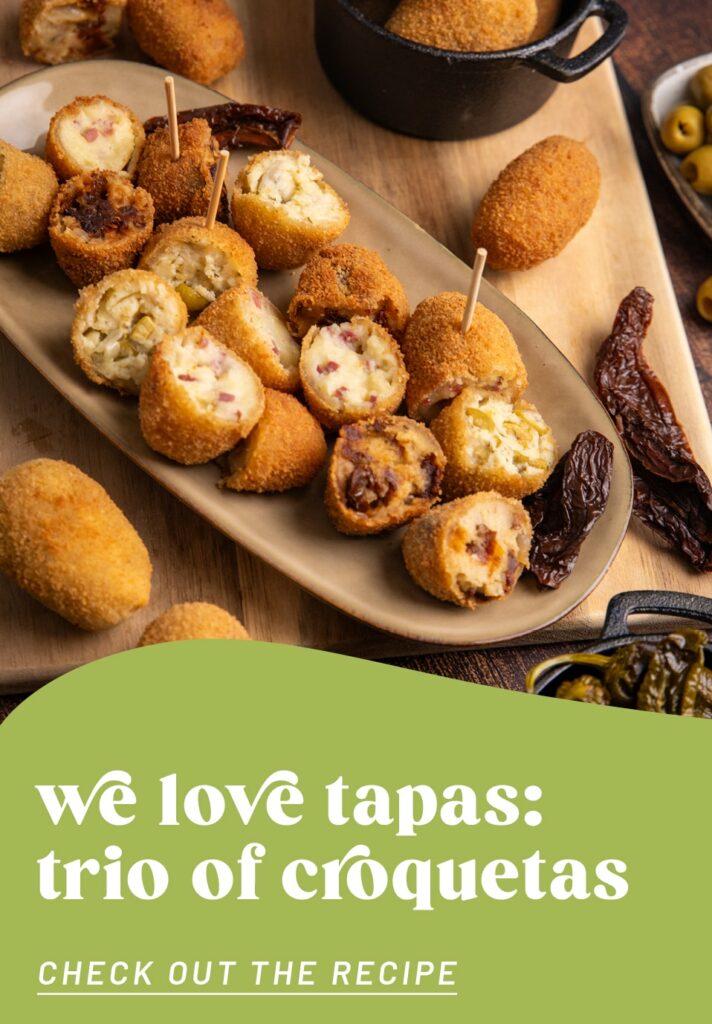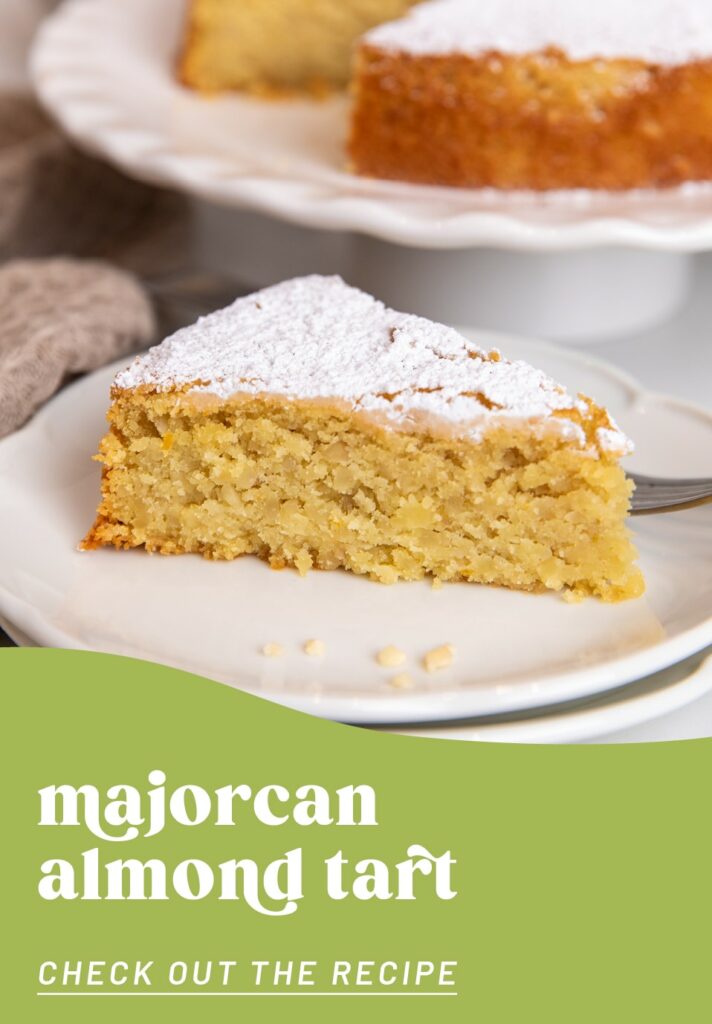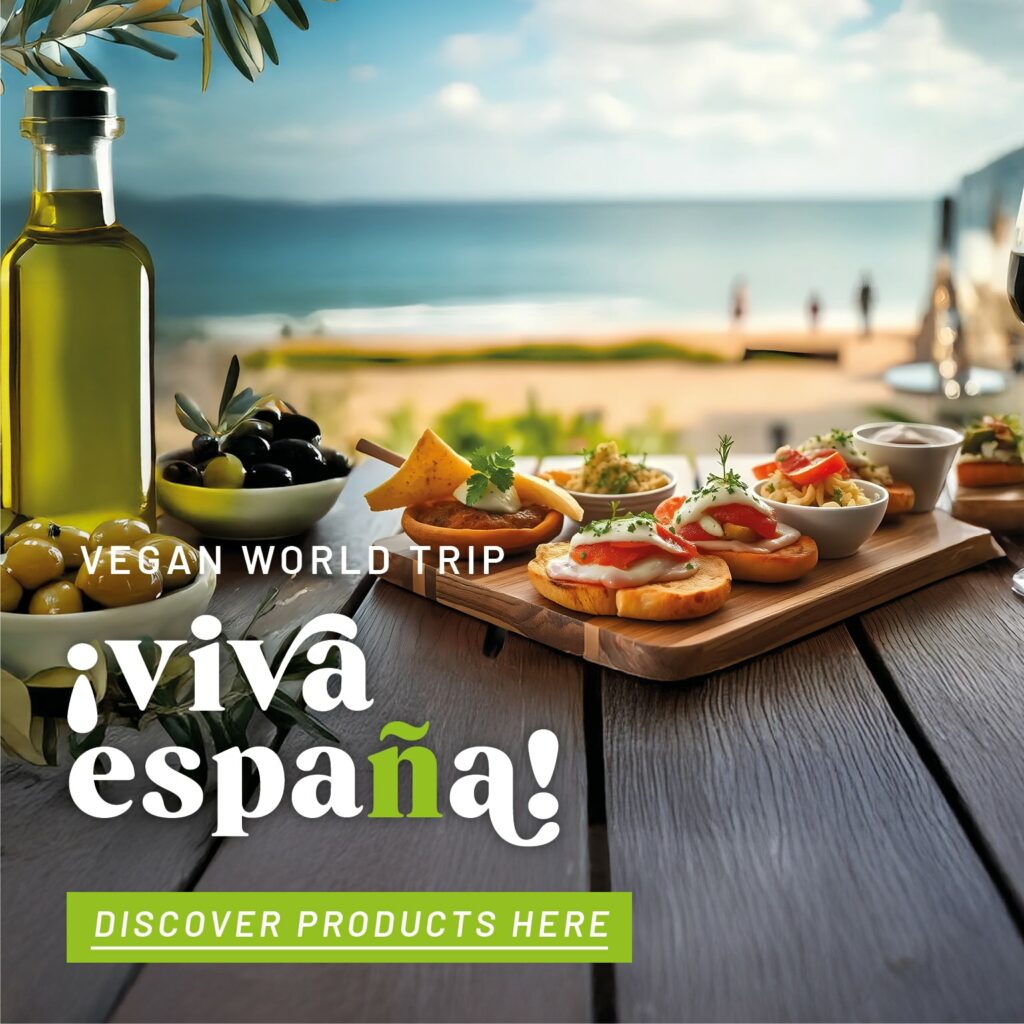VEGAN WORLDTRIP
Plant-based trends olé – welcome to Spain!

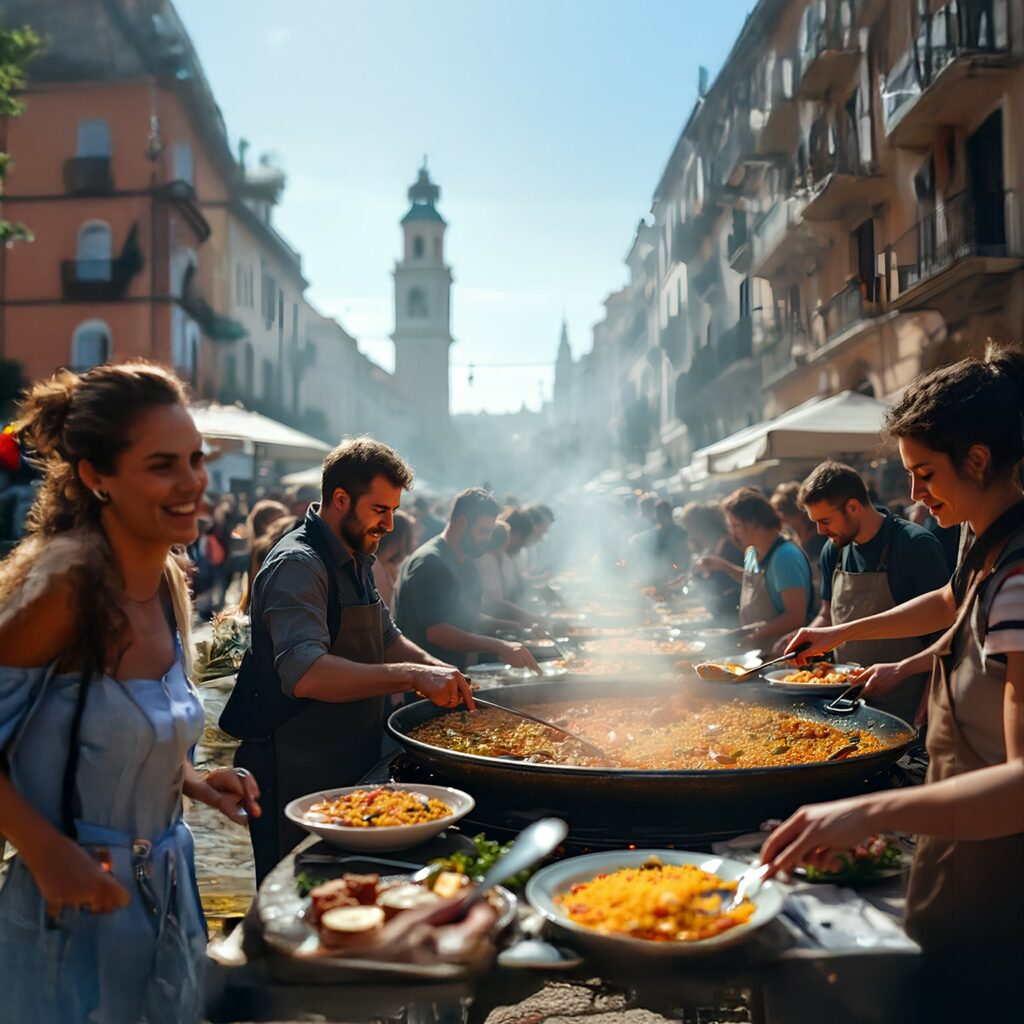
From cliché to true discovery in Spain
Beautiful beaches, cities steeped in history and ancient traditions – Spain is one of the world’s most popular travel destinations. Add to that the Balearic and Canary Islands, which are top-tier tourist magnets in their own right. The culinary delights of these regions are certainly among their highlights as well.
Away from the uniform tourist gastronomy, there’s actually a lot to discover. And we’re not talking about sangria and schnitzel. 😉 Nor are the party strips representative of a country rich in cultural heritage, history and traditions. So what is food really like in this country, which is much more diverse than the average package tourist might imagine? And above all, what treasures are there for vegans to discover in Spain?
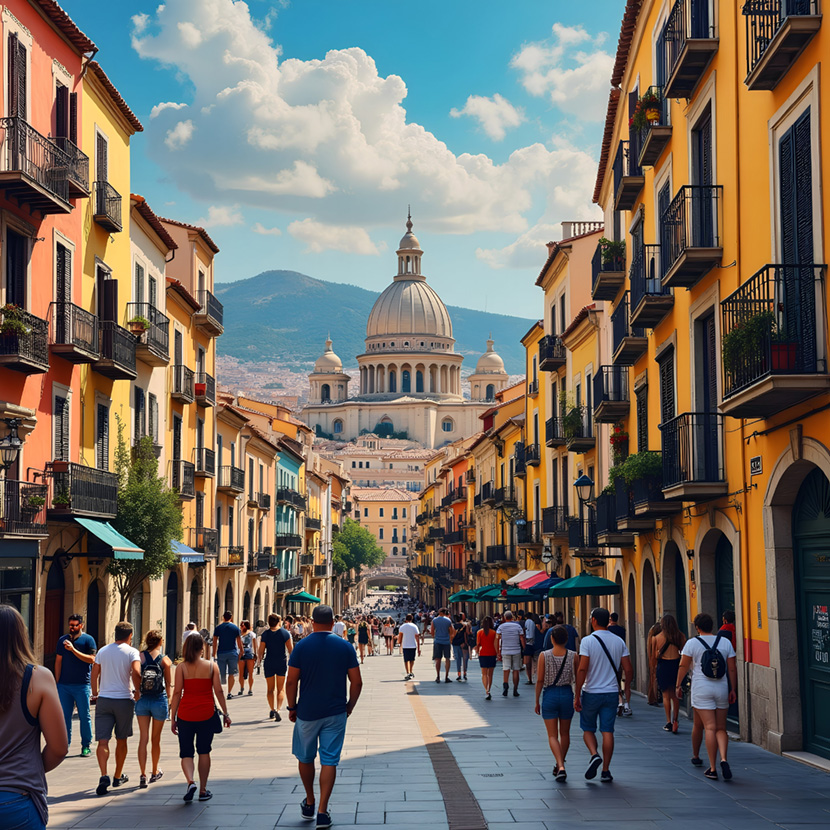
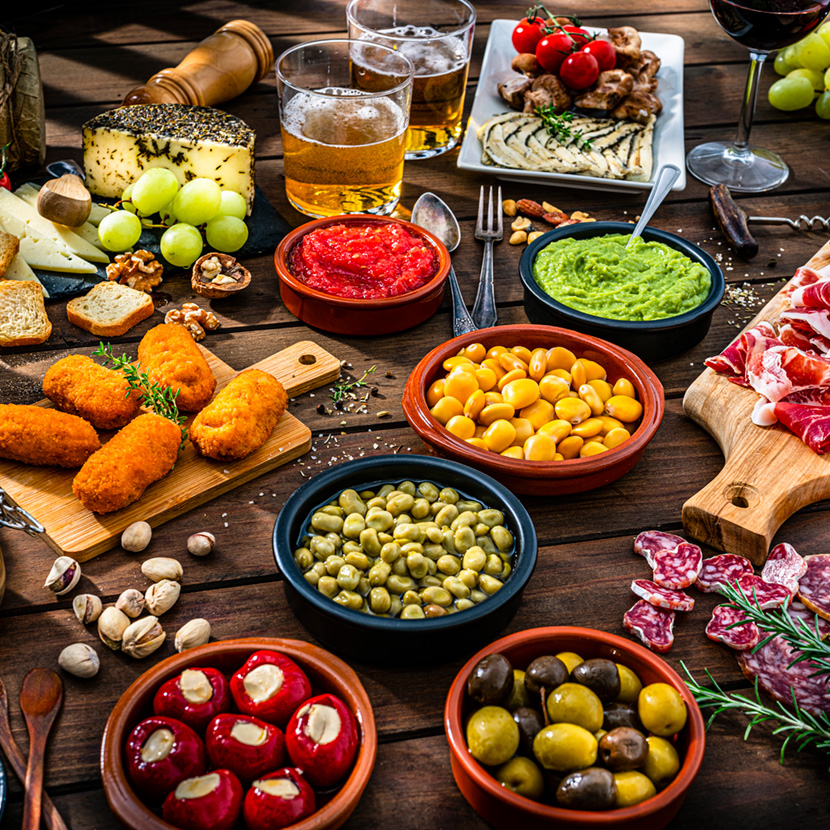
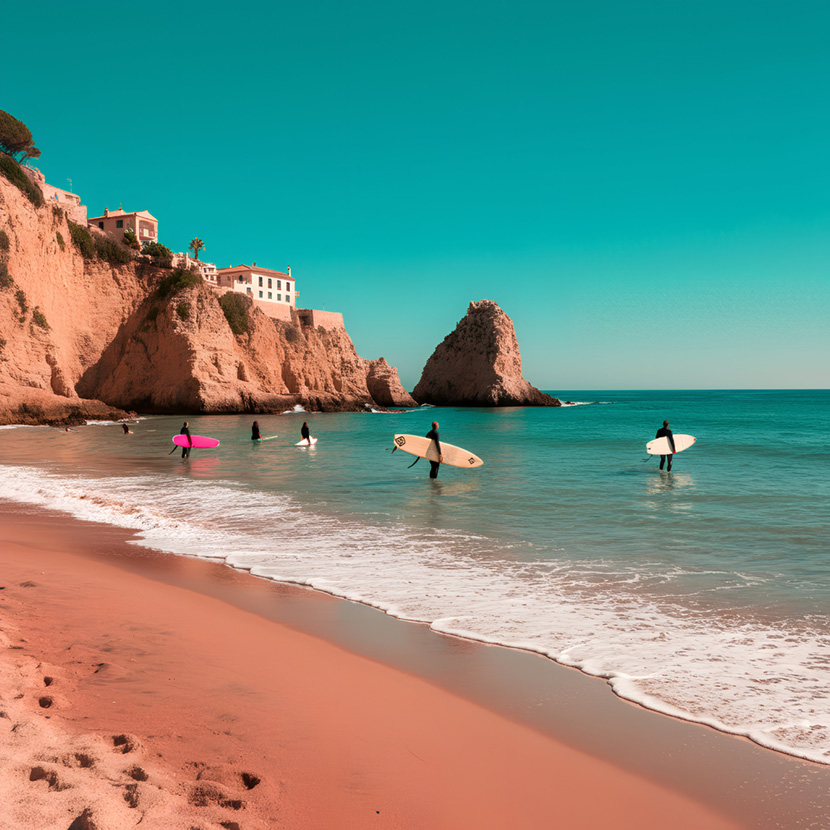
Tapas – the culture of appetisers
Let’s start with the food and with the appetisers … Tapas are appetisers that are usually served in tapas bars, often with wine or beer (sangria is known to be drunk more by tourists 😉) all over Spain. It is a similar tradition to the mezze in the Levant region of the eastern Mediterranean. Classic tapas are served free of charge with alcoholic drinks. However, they are also ordered as ‚raciónes‘ (starters or small dishes).
There are several stories about the origin of tapas (the word “tapa“ actually means “cover“ or “lid“). According to one legend, they originated from the custom of covering drinks with a lid. Initially, the lid was weighed down with olives to prevent it from being blown away, and over time the “weights“ became more and more imaginative. Whatever their origins, today there is an almost infinite variety of small tapas. A visit to a tapas bar is therefore a must. Especially in the capital, Madrid, you can find tapas bars everywhere, ranging from the traditional to the hip.
From “brave“ potatoes to “tipsy“ mushrooms and “smoky“ almonds
Tapas and raciónes are as popular with locals as they are with visitors. Claro … there are plenty of meaty, fishy and cheesy dishes. But even vegans will find something to suit their palate. How about a bowl of olives, called “aceitunas“ in Spanish, pickled dried tomatoes (“tomates secos“), or a “pan con tomate“ (a slice of white bread spread with tomato pulp, garlic and olive oil). Equally central are potatoes, known in Spain as “patatas“. There are “patatas bravas“ (literally “brave“ potatoes served in cubes with a spicy sauce), “patatas fritas“ (fried potatoes) and “patatas aioli“. The latter is usually served with garlic mayonnaise and is therefore not vegan. The other variations are wonderful, mostly purely plant-based starters. Oh, and in the Canary Islands, potatoes are called “papas“. “Papas arrugadas con mojo“, cold baked potatoes with a salt crust, are often served with vegan sauces. The deliciously crunchy “croquetas“ are also easily veganised.
Good to know: There are a few more vegetable dish names you should remember on your tapas tour. “Espinacas con garbanzos“, for example – a dish made with spinach and chickpeas (from Navarre), seasoned with spices such as paprika and cumin. If you order “pimientos del padrón“, you can expect green peppers fried in olive oil and salt. Be prepared for a fiery surprise, depending on the spiciness of the peppers used!
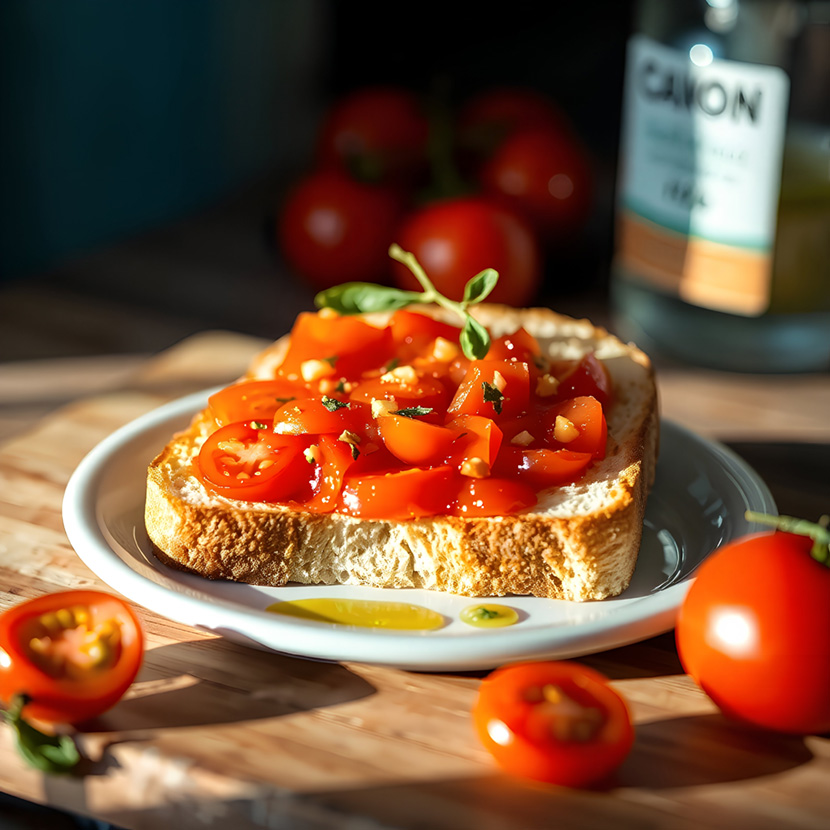
Many restaurants now offer vegan tapas, starters and small dishes, including vegan “croquetas“ and balls or fried mushrooms. Mushrooms “al jerez“ with sherry (to deglaze them), parsley and garlic, onion and chilli to taste are certainly a highlight. Finally, “almendras fritas“ – salted roasted almonds – could become a favourite. All you need is almonds (peeled or unpeeled), coarse sea salt, a tablespoon of olive oil and – this is the trick! – pimentón, smoked paprika powder. “Pimentón de la vera“, the exquisite smoked paprika powder from the western province, is protected by a designation of origin. Almonds make a wonderfully nutty, smoky and salty snack, and not just with that after-work beer!
City, country and sea
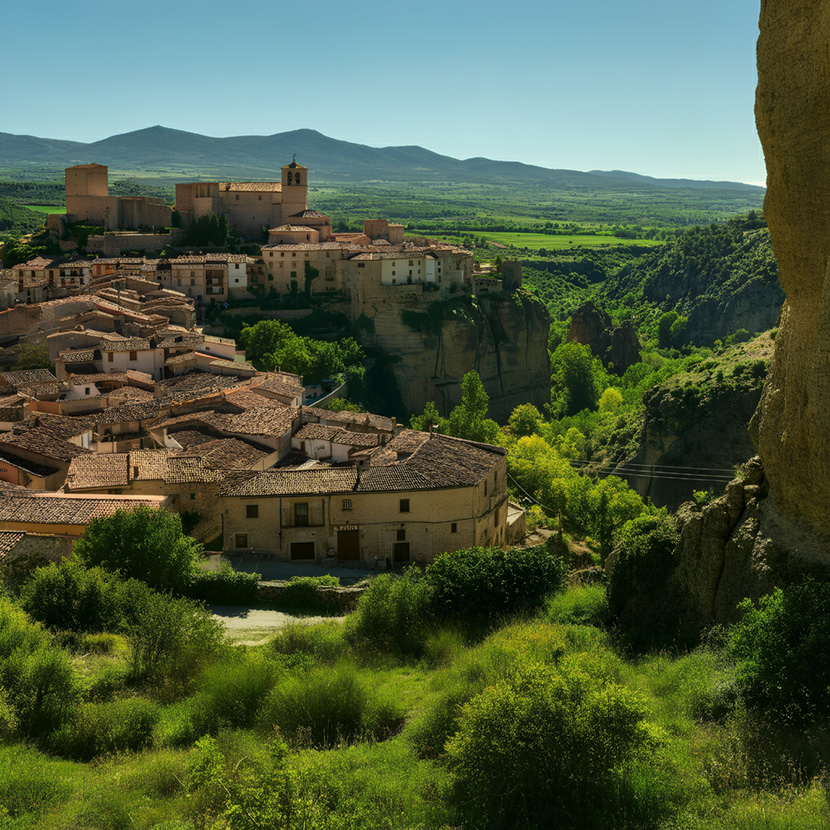
Just as Spain is not just about bullfighting, flamenco and cured ham, it is also not just about its breathtaking coastline and islands. The north of Spain is astonishingly green. Mighty mountain ranges cut through the north and south of the country. There are peaks that are covered in snow almost all year round, and in central Spain you will find arid landscapes such as the Meseta plateau, which looks like a precursor to Africa.
From the Roman ruins of Tarragona and the aqueduct of Segovia, to the fairytale architecture of the Moors, the great cathedrals of Burgos, Toledo and Santiago de Compostela, and Gaudí’s masterpiece, the Sagrada Familia, Spain’s cultural heritage is proudly preserved. And today, travellers can sense it everywhere. In the often lively streets of the cities, you can feel the passionate atmosphere that characterises the country. There is flamenco dancing, of course (the Feria de Abril in Seville, for example), but also many religious celebrations, such as Semana Santa (Holy Week), festivals like the Feria de Málaga and the Festa San Juan at the summer solstice. There are also many open-air events such as parades, markets and concerts. And with the festivities comes the feast…
The capital, Madrid, alone offers travellers an enormous variety of cultural and culinary experiences. For vegans, there is the chickpea stew (“cocido madrileño“) or the “bocadilla de calmares“, a squid sandwich, of which there are delicious plant-based alternatives.
And all along the coastal regions in the west and north, the sea plays a central role in people’s lives as well as in their cuisine. Here, there are many fish and seafood dishes – inspiring us in turn to create vegan versions, because, as you know, there are now fantastic fish alternatives. The Basque tuna stew “marmitako“ is available as a potato stew with tuna substitute. And instead of calamari rings, we prefer onion rings in beer batter. And we’re back to eating again. 🙂
Culture and food in abundance in Andalusia
As well as the national dish, paella (the wonderful student city of Valencia is considered to be its home), there are regional specialities all over the country, such as “cocido madrileño“, a traditional three-course stew. The base is the soup, into which potatoes, cabbage, and chickpeas are added for the second course. This is followed by the meat component. Naturally, this course can simply be omitted. Now let’s turn our gaze from the capital to the south.
The southern region of Andalusia is a world of its own. Here you will find one sensational sight after another, such as the cities of Seville, Cordoba, Jerez and the Atlantic port of Cadiz. The city of Granada is certainly one of the highlights, best known for the fairytale castle, palace and gardens that make up the Moorish-Arabic Alhambra – a top tourist attraction!
Andalusian cuisine is probably just as attractive to vegans, delighting us with its history and many oriental influences. You can find vegan falafels with tomato salsa, stuffed vegetables, couscous and hummus everywhere. “Flamenquines“ – meat rolls usually made with ham and pork tenderloin – are also typical of the Spanish south. Why not try a wonderful vegan version with ham alternative and seitan? Also Andalusian are “garbanzos con espinacas“ – a combination of chickpeas with spinach. Below we introduce you to the very famous Andalusian “gazpacho“…
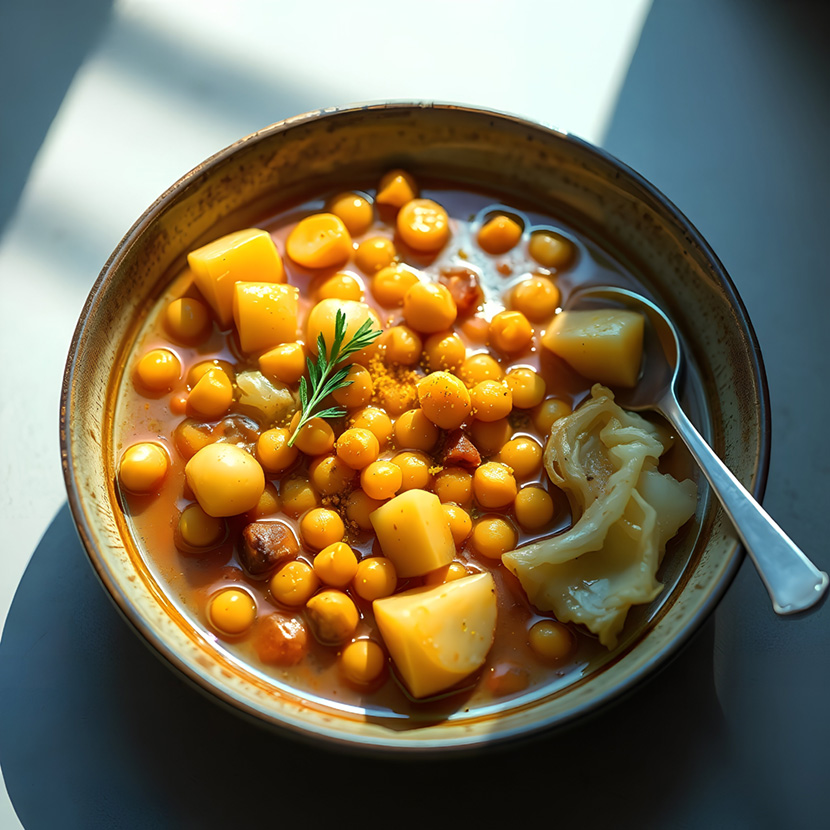
Always a little different… Catalonia

Did you know that Catalan (“el catalán“) is a separate language and not the same as Castilian (“el castillano“)? Catalan is one of the country’s recognised regional languages, along with Galician and Basque. And did you know that Catalan is also spoken in the Balearic Islands? All this exoticism made us curious about the region’s cuisine… And indeed, Catalan cuisine, both in and around Barcelona and on Mallorca and the other Balearic Islands, offers tempting vegan dishes such as “escalivada“. This is a salad of tomatoes, peppers, onions and aubergines mixed with a little olive oil, garlic and salt, often served on toast. Or you can try “samfaina“, a kind of vegetable stew similar to ratatouille, made with aubergines, peppers, tomatoes and onions. In Castile-La Mancha, a similar dish is called “pisto“. Sounds like a healthy lunch, right?
There are also sweet and savoury “buñyoles“, fried doughnuts that can also be made without eggs, very popular in Mallorca and especially at Christmas. If you leave out the meat, the “escudella i carn d’olla“ becomes a purely plant-based stew with vegetables, legumes and pasta. And you must try the Majorcan almond cake, “gató di almendra“. It can also be vegan.
Cold soup, hearty pan – gazpacho and paella
“Gazpacho al andaluz“, or Andalusian-style gazpacho, is a very popular cold soup made with tomatoes, peppers, cucumbers, celery, onions and olive oil – always a refreshing and healthy choice on hot days. Note: bacon or eggs are often added to it – just ask if they can leave them out. It also tastes great on its own, although some purists add a dash of sherry…
Gazpacho or other cold soups and chilled creams go well with the summer heat of southern Spain. Most are based on nutritious plant-based ingredients – made for the vegan lifestyle, therefore! As well as gazpacho, bars often serve “ajoblanco“, a cold garlic cream with almonds, often garnished with fruit. Then there is “salmorejo cordobés“, which is basically a creamier version of “gazpacho al andaluz“ without the cucumber. But even as an inexperienced traveller, you should never refer to salmorejo as gazpacho, as it has a real cult status in Cordoba and its authentic recipe and name are proudly guarded. 😉
The only other dish with a bigger cult following is paella. The name of this rice dish, which is almost synonymous with Spanish cuisine, comes from the Latin “patella“ via Catalan, meaning a large plate made of metal. Today, the word paella in Spain refers to both the pan and the dish. As a rule, every household has more than one large paella pan. The pans are large and flat because the rice should never be more than a few centimetres high. Traditionally, the pans were made of wrought or cast iron and the paella was cooked over a wood fire. Today, of course, there is a different, more modern way of cooking paella, but it is still a real experience to cook it outside over a fire.
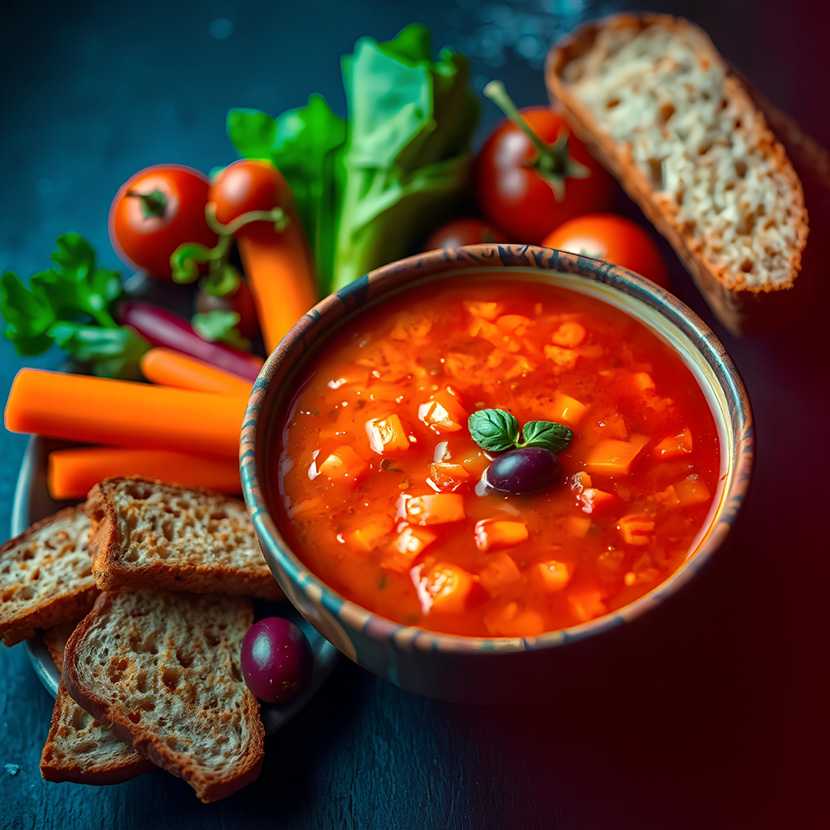
And did you know that paella sings? This is how the Spaniards describe the bubbling sound of the paella pan as it cooks. Real paella rice is called “arroz bomba“. Never use risotto rice, as it’s too sticky. Less starchy long-grain rice is a good alternative.
In addition to the meat and seafood varieties, paella is ideal for its vegetable versions. The vegetables used include tomatoes, beans, peppers and artichokes. You can also find vegan paella in some restaurants, made with vegetables or mushrooms. So don’t miss out on the national dish!
Spain’s favourite dishes veganised in a flash
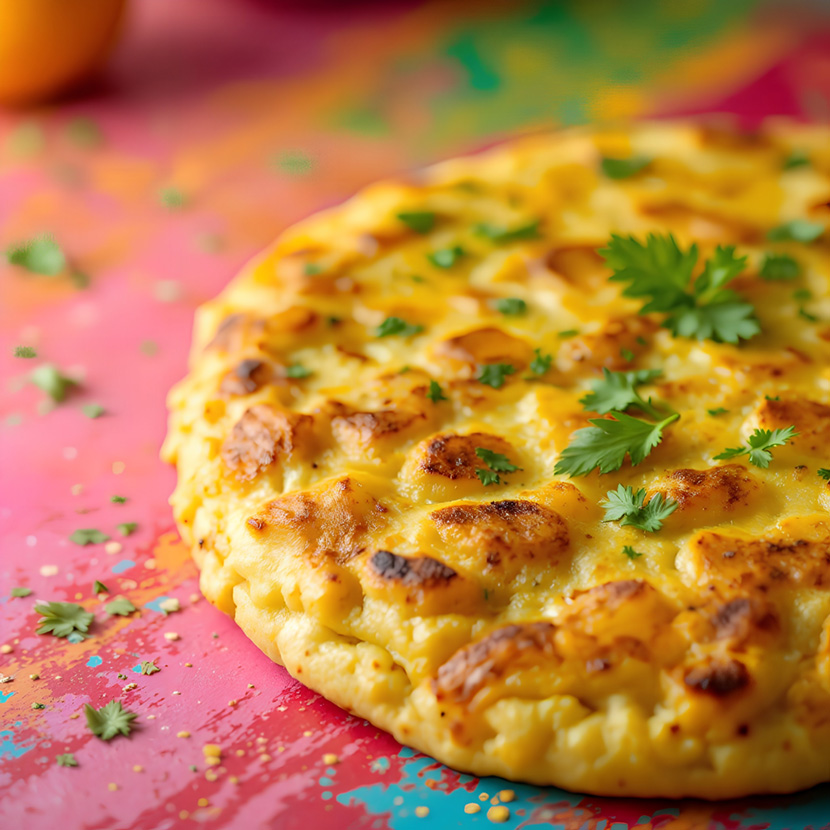
Many traditional dishes can be made vegan. Ask for “sin carne“ (without meat), “sin queso“ (without cheese) or “sin huevos“ (without eggs) for vegan alternatives. In some cases, these dishes can be easily veganised. A classic example is “tortilla española“. There are vegan versions of the classic Spanish tortilla, which is usually made with potatoes, eggs and onions.
The plant-based tortilla version uses chickpea flour instead of eggs. It is mixed with water until it has the consistency of egg. A dash of vinegar softens the chickpea flavour. Fry 5 or 6 medium potatoes and an onion in plenty of oil or, if you want a healthier version, in 2 tablespoons of oil and salted water. When they are soft, mix them with the flour and water mixture in a large bowl. Put them in a frying pan with 2 or 3 tablespoons of oil so they don’t stick together and fry over a medium heat for about 10 minutes. Then turn them over by placing a plate on top and wait another 10 minutes for them to cook on the other side. Tortillas are often served as tapas with delicious sauces.
Empanadas, pasties with a variety of fillings, are popular in both Spain and Latin America – for example, with spinach or a corn-pepper mixture, with pumpkin and nuts, and so on. There are no limits to the plant-based imagination – after all, “empanar“ simply means “to wrap in bread“. So it’s all about what’s inside ;- ) Empanadas make great finger food and look good at any party!
Empanadas, pasties with a variety of fillings, are popular in both Spain and Latin America – for example, with spinach or a corn-pepper mixture, with pumpkin and nuts, and so on. There are no limits to the plant-based imagination – after all, “empanar“ simply means “to wrap in bread“. So it’s all about what’s inside ;- ) Empanadas make great finger food and look good at any party!
And what about dessert? Churros are a popular deep-fried pastry, often served with chocolate sauce. Dark chocolate-covered churros are also usually vegan.
Want more tips for your trip to Spain, or to experience vegan Spain at home? ¡Ahí están!
11 top tips for vegan travel to Spain
1. Tapas, tapas, tapas …
Tapas bars are great for sampling small, plant-based bites. Manzanilla olives and pan con tomate always work. Or order grilled vegetables, toasted almonds and veggie versions of croquettes. Ask for a vegan sauce for the ever-popular patatas and other vegan tapas or raciones of the house! For home use, there are great tapas crackers and salsa tumaca you can buy.
2. Salads, side dishes, tapas:
As many restaurants offer individual salads, our tip is to order 2-3 tapas or raciones to make a nice salad.
3. Ask about sauces:
Sauces (or soups) often contain eggs, cream or other dairy products that are hard to hide. As always, the best approach is to ask politely.
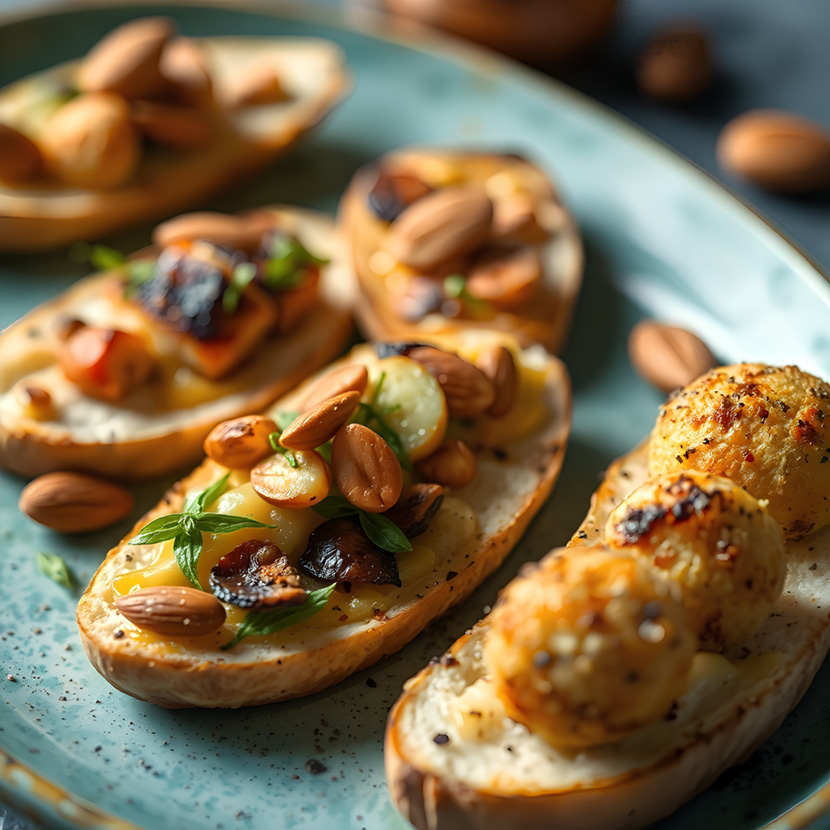
4. Spanish delicacies for picnics and on the go:
“Bocadillos“ (sandwiches) are literally available everywhere in Spain. Vegetable options include grilled vegetables, avocado or hummus. Spain to go!
5. Stroll around the market:
It doesn’t get any fresher than this: A stroll through one of the many weekly markets will reveal the regions’ wealth of fresh fruit, vegetables, nuts, pickles and bread. Not quite as much as in Germany, but vegan food is also on the rise in Spain’s supermarkets and organic shops.
6. Vegan sweets:
We’ve already mentioned churros above. There are also traditional Spanish sweets such as turrón and marzipan, which are often vegan. You can also find vegan ice-cream parlours, especially in student cities. At home, you can also try vegan versions of the delicious “crema catalana“ and, of course, Majorcan almond cake.
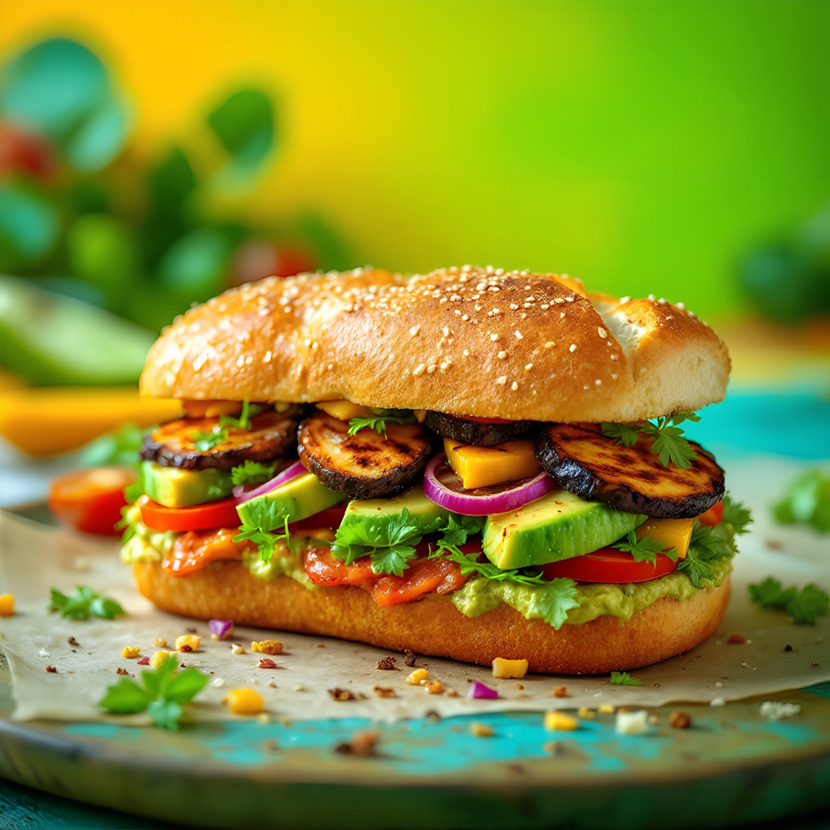
7. Vegan restaurants:
There are more and more of these in the big cities like Madrid, Valencia and Barcelona. But Seville too is home to, for example, Veganitessen, Malaga to El Vegetariono de la Alcazabilla and Granada to Hicuri Artist.
8. International cuisine:
Wieder vor allem in den Städten sind auch internationale Restaurants zu finden, die häufig rein pflanzliche Gerichte bieten. Dann kannst du dich an indischen, japanischen oder italienischen Speisen erfreuen.
9. Don’t confuse Spanish cuisine with Mexican/South American or even Tex-Mex cuisine. For example, trendy guacamole doesn’t come from Spain but from Mexico. If you order a Spanish tortilla, you will get a delicious omelette with potatoes and eggs (or veganised with egg substitute), whereas in Mexico you would get a no less delicious corn tortilla. Corn, beans and chilli are unknown in traditional Spanish cuisine, and Tex-Mex is an American invention anyway, albeit a delicious one.

10. Language tips:
A few phrases in Spanish will make your life easier when travelling. In particular, a small food vocabulary can help ensure that what you’re served is in line with your dietary preferences. Say “¿Tiene opciones veganas?“ to ask for vegetarian alternatives.
11. Finally, a tip for a dream vacation:
Stay at the Villa Vegana in Mallorca and enjoy a completely carefree and relaxed holiday. You can find out more here.
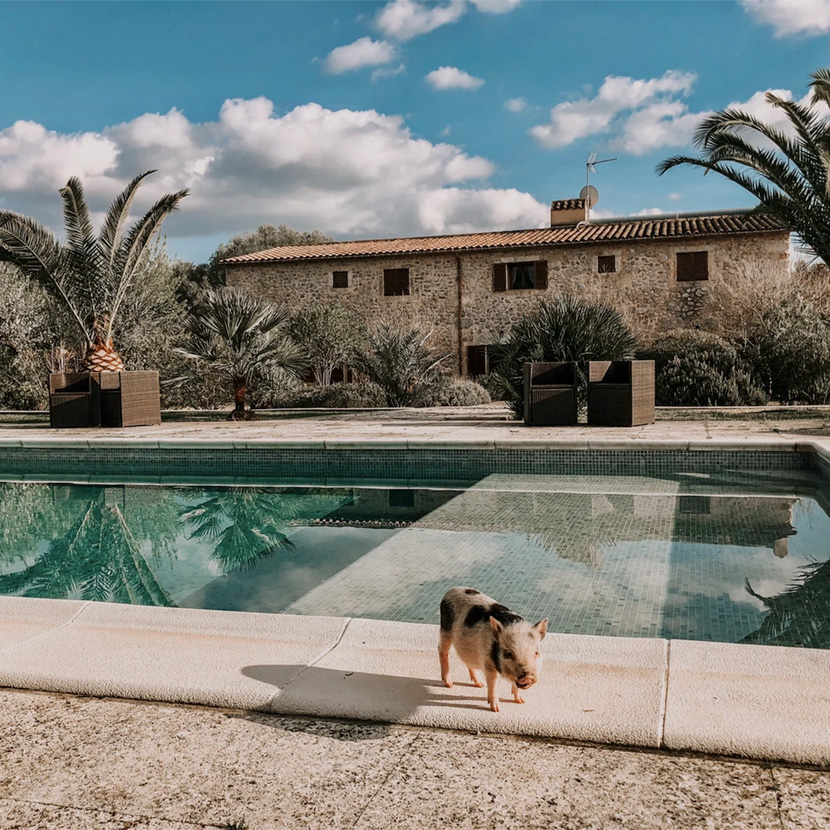
¡Viva España!
Thanks to the tapas culture, the high proportion of vegetables in the local cuisine and the various cultural influences, it’s easy to travel to Spain as a vegan … or to create something Spanish at home!
3 recipes for existing and wannabe Spain fans
The best of Spanish cuisine for you to cook at home… of course, paella is a must. We also have veganised croquetas as tapas and a heavenly almond cake for dessert. ¡Buen provecho!
